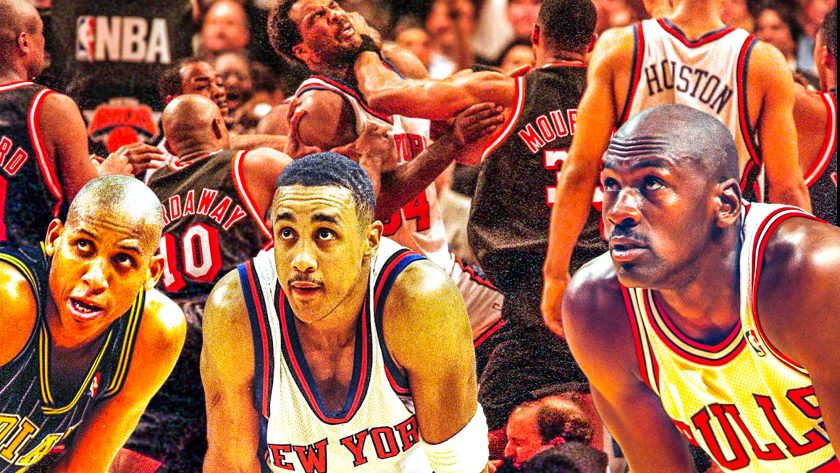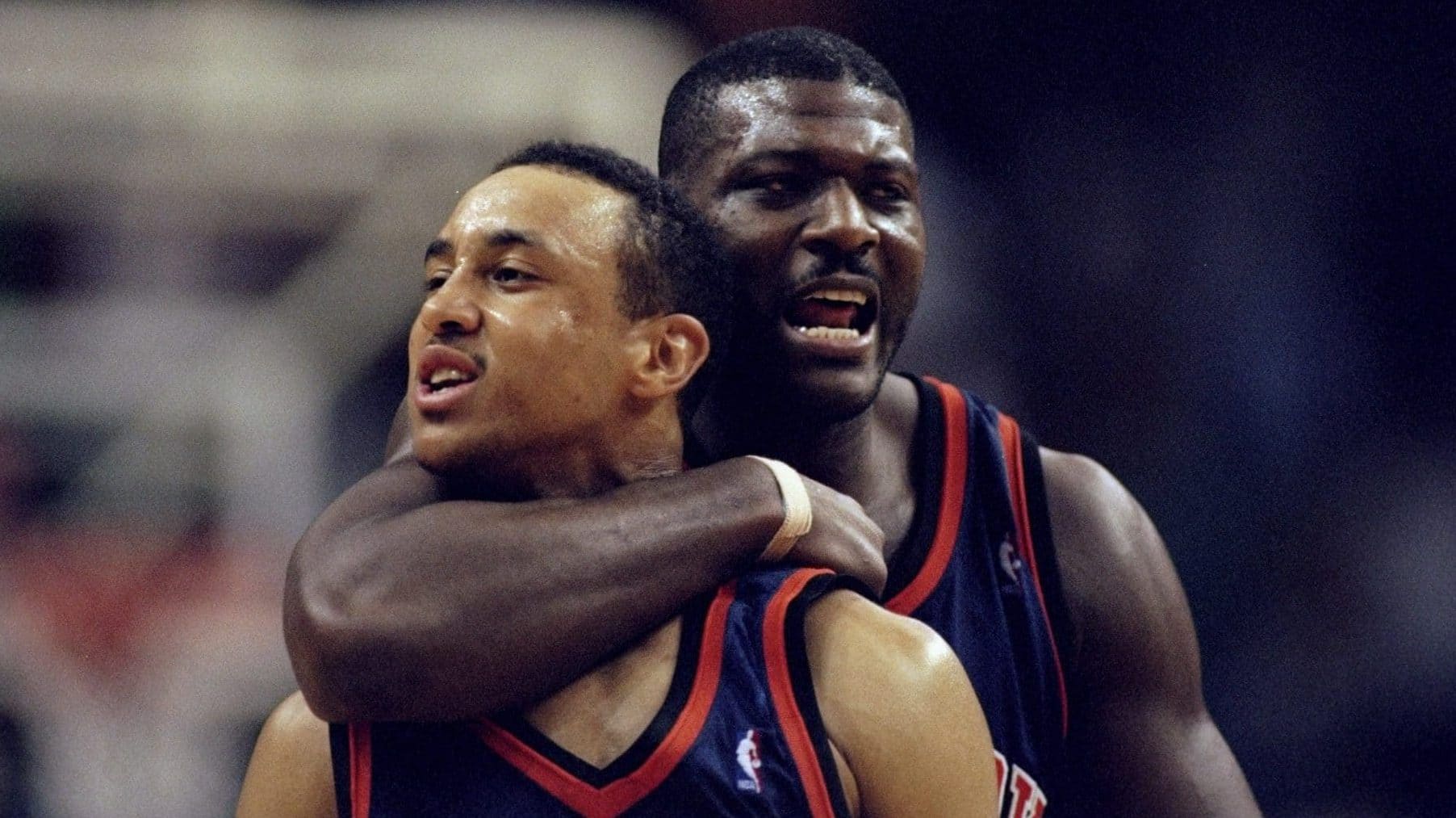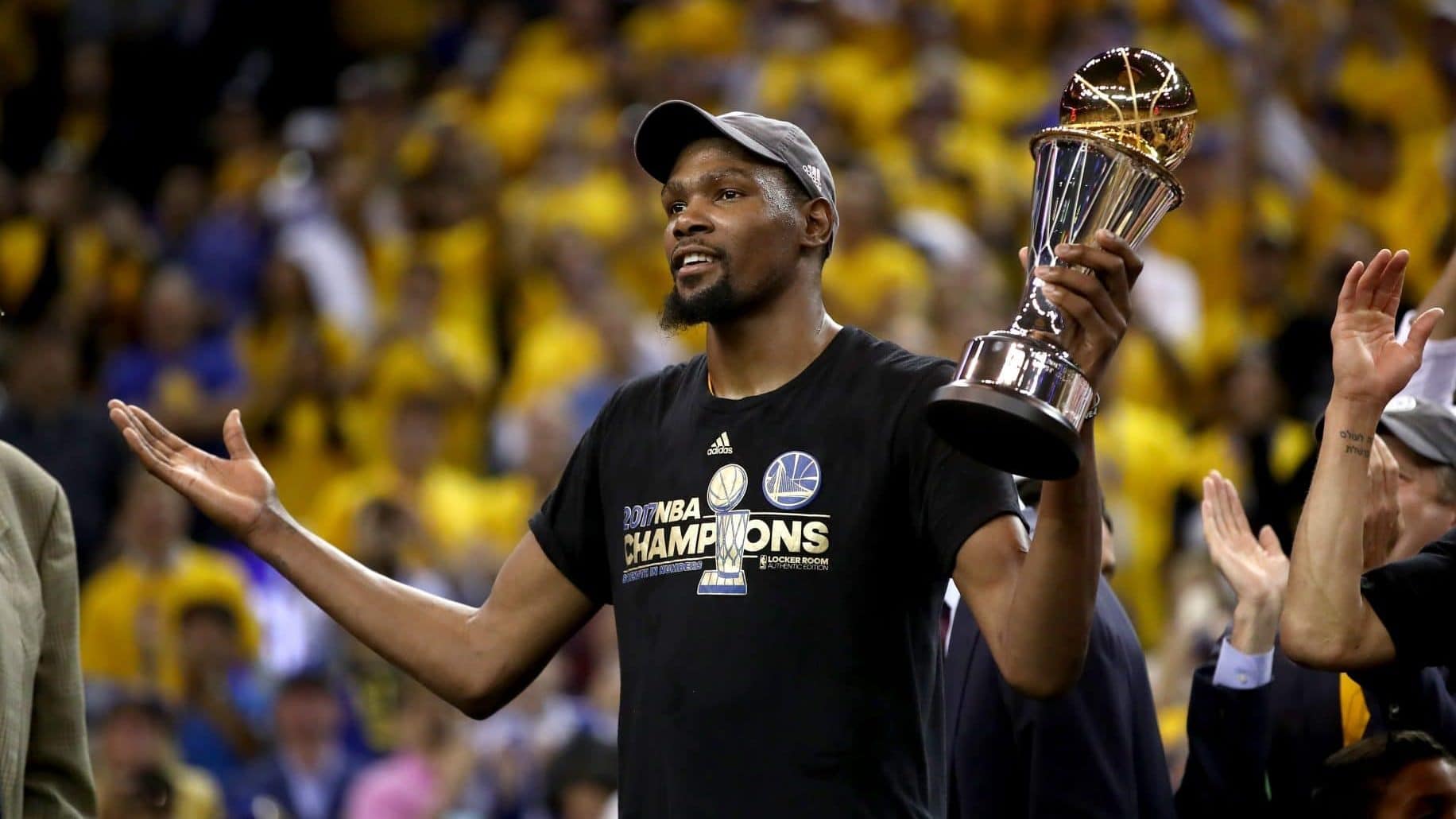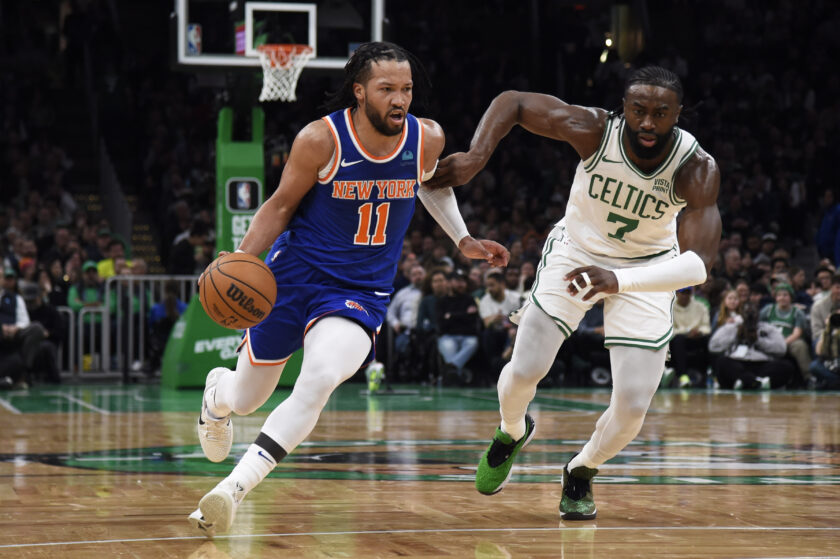Dubs be Damned: I miss my rough, tough, competitive 1990s NBA

Down with the Dubs of 2018, LeBron James and the modern Charmin soft NBA superstar. Give me back my 1990s Association.
It was a Tuesday night and I absolutely had unfinished homework due the next morning. It had to wait for my pregame giddiness distracted me to the point that focusing on fourth-grade math was simply unfathomable.
May 25, 1993, represented the early pinnacle of my young sports fandom as, watching with only 10 and change years of experience on this Earth, I was entirely too young to completely understand everything.
All I knew was that John Starks had just brought the house down on this extremely late school night.

Upon further review, not all NBA fans agreed that Starks dunked all over Michael Jordan. It played out that way the next day, the years to come and even today as two of my closest friends, Matt, the Chicago Bulls fan, and Dan, the New York Knicks fan, would argue to the point food would start flying across the table during lunch. (They’d also play hoops to R. Kelly’s “I believe I can fly, but that’s another story for a different day.)
MJ or Ho Grant, Starks had capped off a brilliant Game 2 effort to put the 60-win Knicks up 2-0 in the best of seven Eastern Conference Finals series against the two-time defending champion Bulls. Of course, New York couldn’t hold its end of the bargain the rest of the way. Though the team always acted as a thorn in Chicago’s side—especially during the ultra-physical ’92 series—MJ and company won four straight en route to the NBA Finals and the organization’s third-straight title.
I’m a Knicks fan. The heartbreak was inhuman. Michael Jordan was vicious and rude. He was a cold, devil of a human being.
It still doesn’t matter.

I miss my rough, tough, competitive 1990s NBA.
The Association demonstrated toughness and competitiveness two decades ago. It was a league in which hand-checking was allowed along the perimeter and consequently, allowing the big man to still hold a place as a star. It was a league in which perimeter stars such as the aforementioned MJ, Clyde Drexler and the ultra-popular Kevin Johnson needed to worry about an elbow to the chest or their head getting knocked off in the paint.
It was a league in which the athletes still wanted to bury the opponent.
Now think about that for a moment: bury the opponent. Think about where you grew up and how your early basketball-living live unfolded.
Whether it came by way of streets, communities or schools, the enemy remained true to the very definition. If my block lost to the boys on the next block and one of my teammates suddenly jumped to that team, he’d have a serious issue. He’d have to go home early and convince his mother to move the family to Seattle. When the boys on the block get spanked, the last thing any of us would be doing is looking for a way out. Rather, destroying those boys and rubbing their faces in it would rule the hours and days to come.
LeBron James, Kevin Durant and DeMarcus Cousins didn’t live on either of those blocks. Where these guys live has brought us to the sad and sorry state the NBA finds itself in at this very moment.
Never blame the Golden State Warriors. It’s not their fault they were able to convince an All-Star center to sign for $5.3M. Blame the player, the media and the fans.
[sc name=”NBA Title” text=”LeBron Started It All” ]It started with LeBron.
What we witnessed as a basketball-loving people during the infamous offseason of 2010 was a scared kid running to the easiest of situations. For James and “The Decision,” it selfishly worked, to a degree. Four straight NBA Finals appearances and two titles later, LeBron James ensured that he wouldn’t go down in history as a ringless stud.
He then righted a wrong by returning to Cleveland. He battled, he poured his heart out, and he eventually captured that elusive title for a city and terrific professional sports fanbase so starved words couldn’t possibly begin to explain.
There were haters. There were lovers. There were lovers who’d call out the haters. All in all, at the end of the day, the media sensation that’s grown since MJ’s perfect storybook career has engrained the thought that “titles mean everything” to all involved (fans, players, etc.).

With two titles and a permanent trip back to The Land, all was forgiven.
Kevin Durant continued the madness. The arguably second-best player in the league was on his way to NBA heroism. Up 3-1 with Russell Westbrook at his side in the 2016 Western Conference Finals, one win would ensure his second NBA Finals appearances while simultaneously taking out the Dubs.
Instead of rallying the troops after a bad 3-1 series defeat, he went off and took the easy way out. The second best player in the game joined the greatest regular-season team of all-time (73 wins). And it’s funny too because anybody who understands anything about the game will tell you KD’s overall NBA playoff performance from 2016 with OKC still trumps anything he’s done in Golden State.
Now, Boogie Cousins’s pact means there are five NBA All-Stars starting for the Warriors and we know for certain whose Larry O’Brien Trophy it is in 2019. The idea that “championships are all that matter” continues to rage on when it’s a complete falsehood. Integrity, selflessness and competitive spirit account for so much of the total greatness pie.
Go ahead and represent the apologist by continuing down that “title count” path. Say that, “The NBA is still interesting.” Say, “The NBA has always lived on the dynasty and this is simply more of the same.” Say, “I’m looking forward to see who can knock off the Dubs.” Say, “I can’t wait for Boston-Golden State.”
[sc name=”NBA Center” ]If you say that, you’re letting the league off the hook. If you say that, you’re only looking forward to the crumbs instead of experiencing real hard-nosed and competitive basketball.
Go ahead and claim it. Not only would you be wrong. You’d actually be contributing to the problem. Remember, it’s the players, media and fans who are all at fault. (Of course, the league’s at fault too, but mentioning that aspect would bring us the hard-cap discussion.)
[sc name=”NBA Title” text=”The Bulls Argument” ]The Bulls won six-of-eight titles during the ’90s. The Dubs have only captured three-of-four. The rationalizers and enablers claim we haven’t even touched the imbalance of the 90s.
Wrong.
The Bulls won six-of-eight, but all eight seasons came with much more flexible parity.
First, it was the Los Angeles Lakers and the last legs of a dynasty. Then, we had the upstart Portland Trail Blazers with Clyde and the boys. Charles Barkley and the Phoenix Suns battled their way through a hard-fought ’93 western bracket to meet up with Jordan for the final chip of the first three-peat.
During his brief retirement (or forced retirement via David Stern), the Knicks actually almost choked up that opportunity to even grace the finals. But let’s not be confused: those Knicks had just one hall of fame player and ran on sweat and guts more than talent.
Though Jordan’s Bulls possessed other-worldly talent, that alone wasn’t enough to climb the mountaintop. In fact, gutting it out and taking those lumps against the Bad Boys in the late 80s allowed a dynasty to truly earn its place in history.
What did the Heat earn prior to LBJ? What did Durant earn prior to the Dubs? What did Boogie earn prior to the Dubs?

In ’95, Jordan actually lost. Shaquille O’Neal, Penny Hardaway and the Orlando Magic beat Chicago with MJ during the eastern semis. Sure, Jordan came back as No. 45 during the second-half of the season and the team wasn’t running on all cylinders, but the team wasn’t ridiculous and insulting to the fan’s intelligence.
Even the record-breaking 1995-96 Bulls weren’t that impressive on paper:
- Ron Harper, Steve Kerr
- Michael Jordan
- Scottie Pippen, Toni Kocuc
- Dennis Rodman, Dickey Simpkins
- Luc Longley, Bill Wennington
The first three-peat team was far less impressive in taking away Rodman (1992-93):
- B.J. Armstrong, John Paxson
- Michael Jordan
- Scottie Pippen, Rodney McCray
- Horace Grant, Brian Williams
- Bill Cartwright, Will Purdue
Of course, the ’96 team won 72 games and took out the Seattle Supersonics in six games. The only team to repeat against the Bulls that decade was the Utah Jazz who employed two hall of famers in Karl Malone and John Stockton.
The enablers of today’s out-of-balance act will make the claim that Jordan’s Bulls only played in two Game 7s. How does that even become a conversation starter when the Cavs and Warriors have met up four straight times and we now already know, barring some crazy miracle, that Golden State will win its fourth title in 2019?
When, during the 1990s, were we absolutely positive about something like that? The Bulls, once moving past the physical and nasty Detroit Pistons, spent large times as the chip favorite, no doubt. But never has it reached this certainty of a degree.
I miss my 1990s basketball.
[sc name=”NBA Title” text=”The Physicality, The Rivalries” ]Never is an event like the Palace in the Malice a good thing, but since the awful reminder of ugliness, the sport has actually gone awry in the department of physicality. Jeff Van Gundy isn’t the only one confused.
Game after game, the question of Charmin soft basketball plays reviewed for possible flagrants hurt the sole of so many old-school hoops fans. Perhaps the 90s were a little too much in that department coupled with the ridiculously low scoring. But hey, at least perimeter talent couldn’t treat the lane like its own private living room.
When Jordan drove the lane against Charles Oakley, Anthony Mason and the Knicks, it was a risk. It was such a risk that offense’s routinely built a box offense that featured the 7-foot post-man. When LeBron and KD decide to drive the lane, it’s two points.

Today, there’s no such thing (as the low-box man). It’s not prudent to build around a big man down in the box because nobody on the perimeter can be touched. They can’t even be touched in the lane and in the dirty areas for, of course, they are the perimeter stars. Big men, on the other hand, can beat each other up all they want.
During the 1990s, every size was treated the same and the favorable softness that plagues the league has seemingly extended off the court.
[sc name=”NBA Title” text=”Lazy Competitors” ]Nobody wants to compete anymore.
Larry Bird would be damned if Magic Johnson beat him. Kurt Rambis would be damned if Kevin McHale put up that righty lay-up untouched (or unclotheslined as seen on one specific, infamous play). Jordan would simply melt if Pat Riley’s Knicks somehow found a way.
That was the attitude over 25 years ago.
Today, LeBron takes the easy way out only to know all will be forgiven when he goes back. So forgiven, in fact, nobody cares about his Los Angeles move. After all, he’s a businessman, right? It’s about the kids, right? There can’t be any good schools for his kids to attend in The Land.
Today, KD knows he’ll be ridiculed by the masses for joining the very team that ripped the heart out the year before. But hey, he won’t be ridiculed by all. In fact, so many platforms who never say a negative thing about the star athlete will put its own spin on why KD did the “right” thing.

Today, Boogie and his camp come up with the excuse that “nobody offered him a legit deal.” But hey, he’ll walk away with an easy ring that’s really worth nothing while the Bay Area celebrates.
They all know the enablers have their back and they can get by while piling up those easy chips.
It didn’t start with Kevin Garnett. While a strong case can be made that Boston’s Big 3 started it all, it’s LeBron’s “larger than life” place in the game that’s allowed others to follow. These younger generation boys would rather take the strategic, easy way out over ripping the opponents’ face off.
And that, in a nutshell, is why so many miss the NBA of the 1990s.
[sc name=”NBA Title” text=”Final Thoughts” ]Via the league (with no hard-cap and avenues to go the route of Golden State and Charmin soft rules that provide less physicality than a local YMCA game), the fans (who possess a great deal of enablers), the media (whom many refuse to say the slightest negative thing about the superstar), and the athletes themselves, there are no rivalries and what’s missing is that competitive drive of wanting to the rip the heart of the enemy out.
The New York Knicks of the 1990s didn’t win a title. Twice they found themselves on the grandest of stages. Twice they came up short.
As a fan, I wouldn’t have it any other way because today, I’m that much more appreciative of those teams and hungry to see it unfold again.
As a diehard Warriors fan, how can it even be fun anymore? Seriously. Unless you’re that obnoxious fan who doesn’t really understand much about history and the game itself, as a diehard, how is it even fun?
In addition to my Knicks fandom, I also grew up a Yankees, Jets and Rangers fan. Guess what? The Yankees have fallen out of the “diehard” category. All of the winning and bandwagon-jumping witnessed through the years has softened my view. It’ll always run in my blood, but that diehard angle to it is now gone.
When was the last time a legit NBA rivalry reared its head? Two decades ago, there were too many: the Knicks and Bulls, Knicks and Heat, Bulls and Pacers, Knicks and Pacers, Spurs and Suns, etc. Now, it’s simply the Cavs and Dubs for no other reason than, “It’s the Finals.”

The NBA will always attract a large following. They’re the most progressive and social media-wise professional sports outfit on the planet. But they’re losing the diehard, intelligent fan with every unbalanced move that unfolds.
For the 1990s Bulls to mirror this new-aged Dubs situation, Jordan, Pippen and Rodman would have to welcome in Ewing and Gary Payton.
- Gary Payton
- Michael Jordan
- Scottie Pippen
- Dennis Rodman
- Patrick Ewing
It’s not about title numbers (six Bulls chips to three for the Dubs). It’s not about dynasties (as, for such a superstar league, dynasties will always exist). That’s not what we’re dealing with here. That’s not what we’re arguing.
It comes down to competitiveness, suspense, drama and what we’re experiencing today (in already knowing the champion) hasn’t happened since Bill Russell. It’s horrendous that the book on the 2018-19 NBA season is already opened and shut.
Shall this be the first time in a while something like this happened, OK, it’s forgivable. It’s not. We’ve known the Dubs and Cavs would meet up for the last three seasons. We’re now working on a half decade of completely predictable NBA events.
Dynasties (and Bill Russell’s squads aside), when was the last time that’s happened in the National Basketball Association—a half decade of already knowing the finals participants a year in advance?
Twenty-five years ago, Michael Jordan may have reached the NBA Finals, but he was put through the ringer in doing so. We were never sure he’d be able to get it done and other than ’96, real suspense remained.
NBA players of the 1990s would lose, turn enraged and then look to rip your heart out the next time and serve it to your family with a side of applesauce (simply because you knew his mom hated the stuff). These new-aged boys just don’t have that in them and we’re all letting them off the hook.
Oh yeah … and the “NBA on NBC.”
God, I miss my 1990s NBA.
[sc name=”Generic Link Next” link=”https://elitesportsny.com/2016/07/04/kevin-durant-continues-selfish-title-chasing-ways-nba/” text=”Kevin Durant Continues The Selfish, Championship-Chasing Ways Of The NBA” ] [sc name=”NBA Footer” ]Robby Sabo is a co-founder, CEO and credentialed New York Jets content creator for Jets X-Factor - Jet X, which includes Sabo's Sessions (in-depth film breakdowns) and Sabo with the Jets. Host: Underdog Jets Podcast with Wayne Chrebet and Sabo Radio. Member: Pro Football Writers of America. Coach: Port Jervis (NY) High School. Washed up strong safety and 400M runner. SEO: XL Media. Founder: Elite Sports NY - ESNY (Sold in 2020). SEO: XL Media.
Email: robby.sabo[at]jetsxfactor.com





